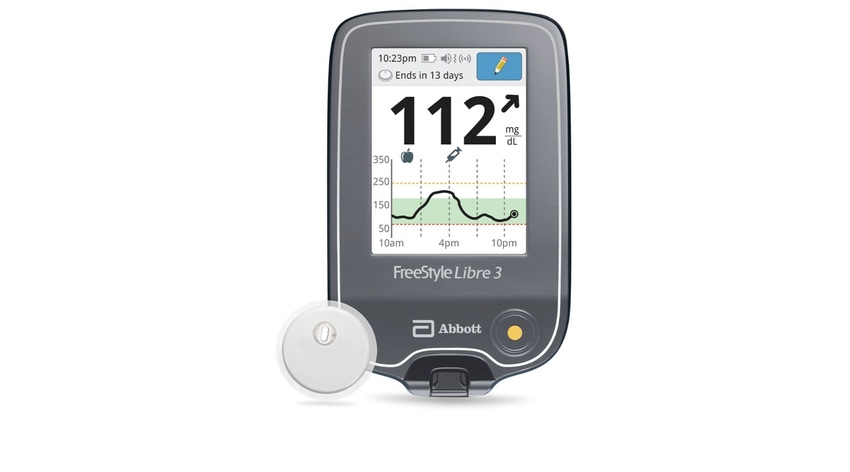Abbott CEO Touts Libre as ‘Most Successful Medtech Product in History’
What does Libre’s success mean for Abbott's anticipated launch of Lingo?
January 10, 2024

The annual J.P. Morgan Healthcare Conference is an event where companies need to embrace the "go big or go home" mentality, and Abbott CEO Robert Ford certainly went big.
Speaking about the company's FreeStyle Libre continuous glucose monitoring (CGM) platform, Ford declared it the best medtech product in history.
"I cannot think of any single medtech product that has reached this level of success," he said. "Libre is definitely the most successful medtech product in history, at least in terms of revenue."
Abbott has previously set a lofty annual sales target of $10 billion by 2028 for its FreeStyle Libre continuous glucose monitoring (CGM) platform. At roughly $5 billion in annual sales currently, reaching the $10 billion target by 2028 equates to a compound annual growth rate of about 15%, Ford acknowledged. Still, he expressed confidence in hitting the goal.
"And it's really predicated on really a few different areas that we're focusing on," he said, during a Q&A with J.P. Morgan's Robbie Marcus.
Ford said the first part of that strategy is to increase market share in the insulin pumper segment, getting more insulin pumpers to adopt CGM with a Libre sensor.
Abbott has already demonstrated its ability to reach that segment through partnerships with insulin pump makers like Tandem. The companies announced Monday that Tandem’s t:slim X2 insulin pump with Control-IQ technology is the first automated insulin delivery (AID) system to integrate with Abbott’s FreeStyle Libre 2 Plus, a 15-day CGM sensor.
But Abbott has also challenged itself to leapfrog that by developing a dual analyte sensor that will continuously measure both glucose and ketones.
"And the feedback that we received from the [key opinion leader] community regarding the availability of that sensor and the connection of that to a pump provides a lot of value to the users," Ford said. "So we're doing a lot of work to be able to gain share in that segment."
The company also continues to target the Type 2 basal insulin population. That is the largest segment of the diabetes space, Ford said, and the penetration in that segment has historically been low and traditionally focused more on cash pay users.
"We've generated a lot of clinical data to be able to show the same benefits that somebody who's taking injections multiple times a day but is only taking one injection a day that there's considerable benefit for that patient population, too," Ford said, adding that the clinical data has begun to impact reimbursement decisions both in and outside the United States. "So we believe that, that has got tremendous opportunity for growth and tremendous impact for those patients that are living with Type 2 diabetes."
Finally, Abbott is taking the platform beyond diabetes with the company's Lingo product. The product will be billed as a personalized consumer health wearable with a direct-to-consumer model that bypasses the need for a prescription or insurance coverage.
"Ultimately, we want this technology to be available to everybody," Ford said.
Abbott recently completed a pilot launch in the United Kingdom to validate this go-to-market strategy for the Lingo offering.
"The early feedback from users has been very, very encouraging. Users find Lingo to be engaging, enjoyable, educational, but more importantly, life-changing by helping them make positive lifestyle and behavior changes that improve the way they feel and perform throughout the day," Ford said. "And we're excited about the opportunity to bring Lingo to the U.S. market soon."
All of that combined is what Ford says gives him confidence in Abbott's ability to deliver on that $10 billion sales target by 2028.
There are now more than 5 million Libre users worldwide with 2 million users in the United States.
"Our strategy was to target the mass market, and that has been extremely successful," Ford said. "The market needed a pain-free, highly accurate, easy to use and cost effective system and Libre hit on all of those dimensions. ... But despite our success, there is still a lot of opportunity in this area. There are more than 500 million people with diabetes worldwide, so we have just begun to scratch the surface and there are several new growth opportunities for us on the horizon."
While the Libre sensor has been an incredible success story for Abbott, the company did face some battery-related challenges with Libre last year. In April, the company initiated a voluntary medical device correction that led to a class I recall.
The company said a limited number of reports worldwide (0.0017%) from users over several years indicated that the lithium-ion batteries used in the CGM readers can sometimes swell, infrequently overheat, or, in very rare cases, spark or catch fire.
Abbott emphasized the instructions for the devices including guidance on how to properly store, charge, and use a reader and its accompanying USB cable and power adapter.
About the Author(s)
You May Also Like



.png?width=300&auto=webp&quality=80&disable=upscale)
